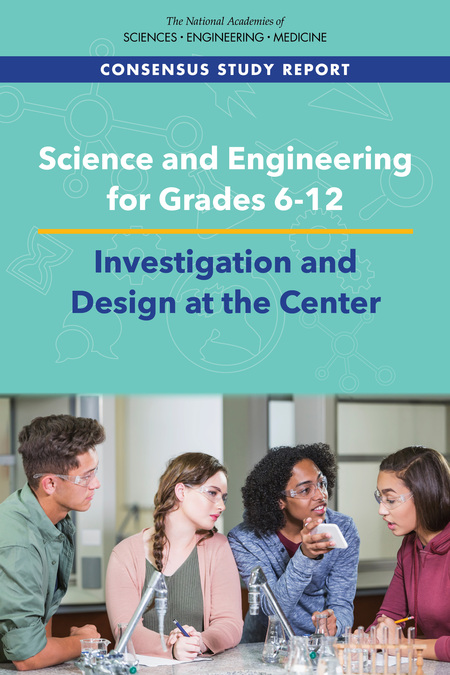STEM Ed. Report: Teachers Key to Reform
“Students learn by doing.”
That may seem obvious to educators, but when it’s the opening line of a major STEM education consensus study from the National Academies of Sciences, Engineering, and Medicine, the statement signals a sea change in practice. And teachers, refreshingly, are hailed as key to reform.
Science and Engineering for Grades 6-12: Investigation and Design at the Center, available for free online, builds on the National Academies framework for science education that led to the development of the Next Generation Science Standards in 2013. The standards, which emphasize cross-cutting concepts, hands-on investigations, and engineering design, now guide STEM education in 19 states and the District of Columbia.
But implementation has been spotty, particularly in under-resourced schools. Moreover, the National Academies study notes, some previous efforts to reform science education have “focused on the students expected to join the scientific and technical workforce and intentionally or unintentionally excluded others.”
The report – released at a Capitol Hill panel discussion that included Kansas high school engineering and robotics teacher Bruce Wellman, a nationally certified teacher and member of ASEE’s P-12 Advisory Committee – makes a strong case for engaging all students, particularly to underrepresented groups of students. It also calls for the creation of more “open educational resources” (free curricula, lesson plans, and other just-in-time instructional materials) to alleviate the 10 hours a week on average that teachers now spend searching for ways to cover required concepts, and offers seven recommendations for closing the STEM education gap. Among them:
- Science investigation and engineering design “should be the central approach” for teaching and learning STEM.

- Teachers and instructional designers should work in teams to design coherent lesson sequences.
- Administrators should take steps to address the deep history of inequities by offering a “full and rigorous sequence of science and engineering learning opportunities.” That includes providing adequate space and materials and letting teachers have a say in choosing high-quality professional development.
- Teacher preparation programs should include undergraduate research experiences.
- State, regional, and district leaders should commission and use valid, reliable assessments that mirror how teachers measure three-dimensional learning. They also should ensure that their staff who oversee STEM instruction have a deep knowledge of the NGSS framework’s approaches to STEM teaching and learning.
Read the report’s summary HERE or see an interactive infographic with key recommendations and link to the full study.
Filed under: For Teachers, Grades 6-8, Grades 9-12, K-12 Education News, Special Features
Tags: Education Policy, Engineering Design, National Academies of Sciences, NGSS, Public Policy, Science and Engineering for Grades 6-12: Investigation and Design at the Center, STEM education, STEM equity








